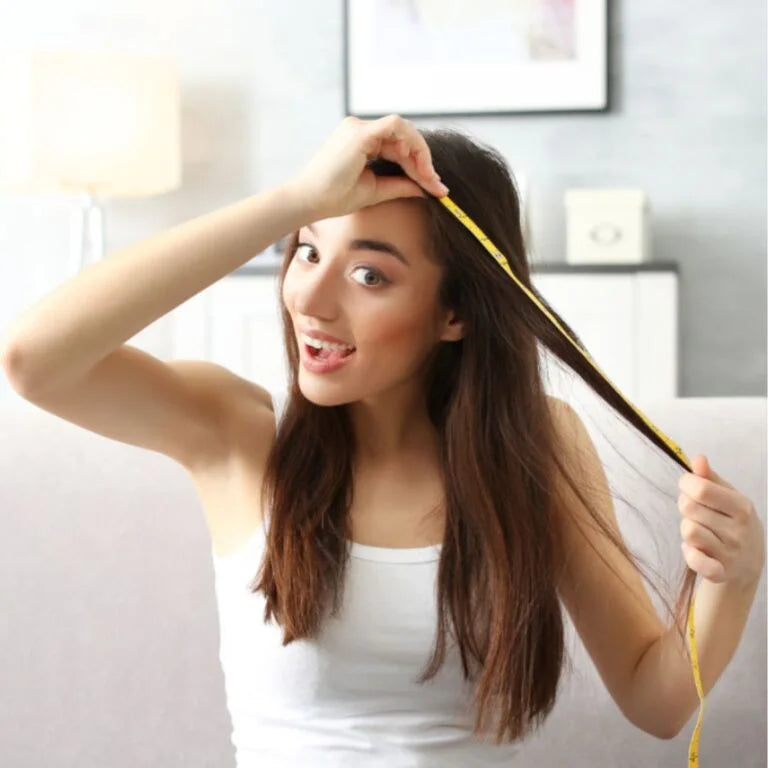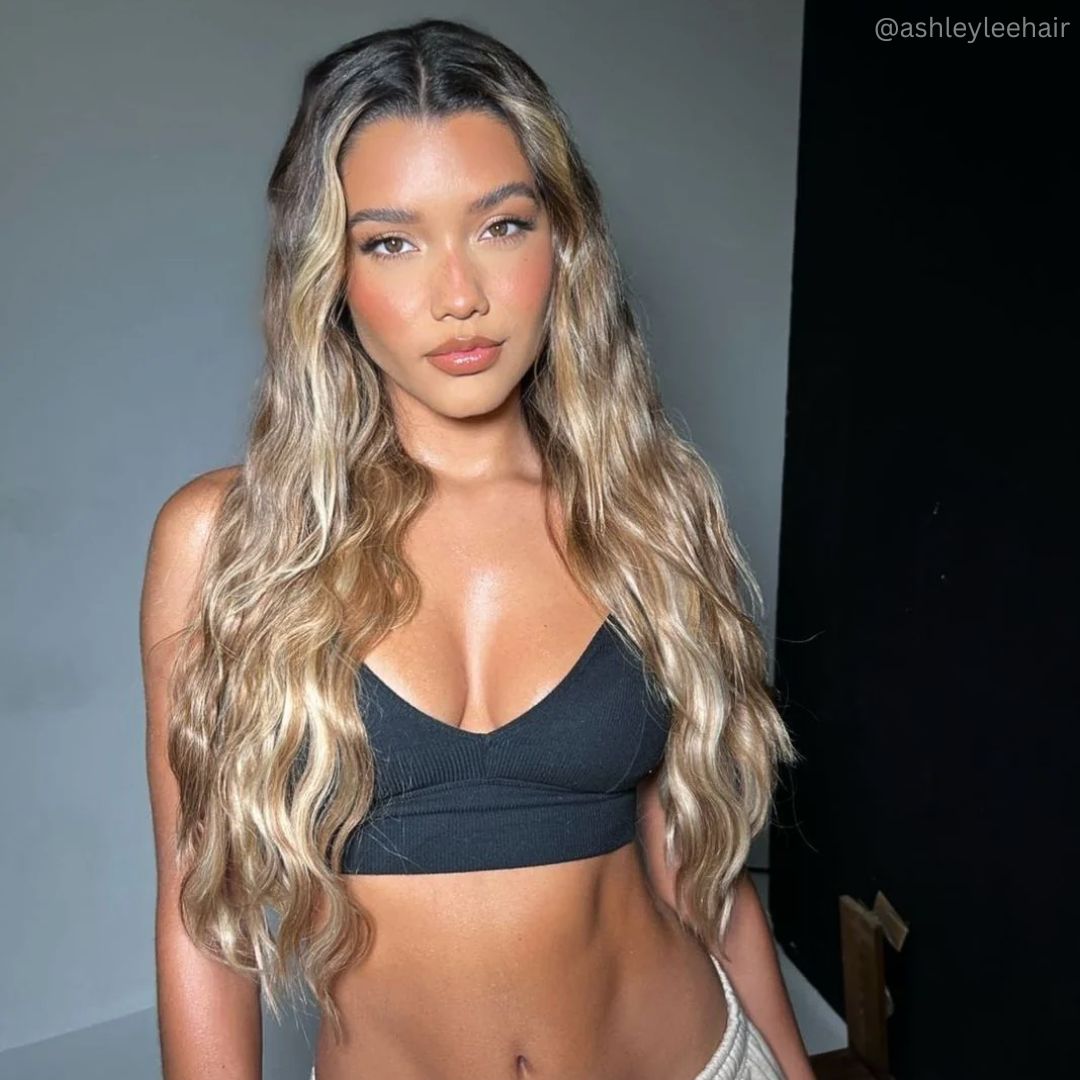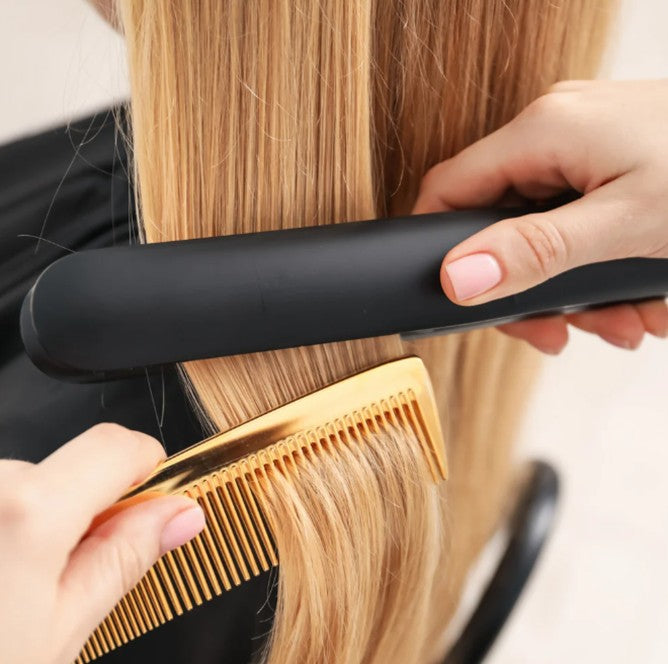Split Ends: Everything You Need To Know
by BRENDA L. / MAR 10, 2022

Reading Time: 6 Minutes
Index
Did you know that on average, most women spend around 1.5 years over the course of their lifetime doing their hair? Brushing, washing, colouring, treatments, blow dries, flat ironing, curling; the care and styling combinations your hair goes through are countless.
If you add weathering, pollution, poor diet, wrong products and hard water minerals to the equation, well, you can easily guess – the future doesn’t look too bright for your strands. If you wear human hair extensions, you should probably know that they are prone to breakage and stress too, just like your natural hair.
But what are split ends exactly? How many types of split ends are out there? And most importantly, what can you do to prevent them from happening and how do you get rid of them?

What Are Split Ends? (back to index)
By definition, a split end is when your hair splinters due to the oldest part of the hair shaft – aka your ends, yes. If untreated, split ends lead to breakage, making the strand go significantly shorter than it was before.
Ever wondered why, although time passes by, your length doesn’t seem to be going anywhere past your shoulders? If you fried your hair, unfortunately, this may be the result of untreated split ends. Nuh-uh, not cute.
And whilst yes, you can invest in clip-in hair extensions to spice up your hair game every now and then, you also want the best for your natural hair’s health.

Know Your Enemy: Types Of Split Ends (back to index)
Of course, why would split ends keep it nice and simple? That’s right, there’s multiple types of split ends out there ready to ruin your mane. Take a look at your ends – usually the ones in the front, framing your face, are the ones more subject to mechanical stress and heat damage as that is the part of your hair where you naturally focus your styling.
Done? Now take note, and read on to categorise your own split ends (if you have them to begin with!).
What Do Split Ends Look Like? (back to index)
Each type of split end has its own look. Whilst some may be more salvageable than others, it’s important to know how to identify them and take action at the early stages to spare your mane a blunt cut.
The Y Strand
By far the most common type of split end, pretty self-explanatory as well: your strand is split at the end, making the affected hairs look like a “Y”.
The Tree Strand
Similar to the Y strand, but with extra steps. The affected hair strand is divided in multiple, thin ramifications.
The Crinkle
Your hair is still whole, but looks crinkly and worn out. When touching crinkly hair, your locks feel brittle and dry,
The Knot
Once again, the knot is self-explanatory. This is a recurring issue in damaged curly hair, and it usually causes breakage at the knotting point.
The Right Angle
Your strand is damaged, but didn’t fully break (yet). Instead, it’s now hanging bendy at its breaking point.
The White Dot
Hairs the end with a white tip are hairs that have succumbed to breakage. When cutting your hair, professional scissors cut the shaft neatly. White tips happen when a strand was picked and pulled when it was at its lowest – dry, brittle and damaged.
The Candle
A hair strand that looks thinner at the end. This is a strong, stubborn strand that although it went through some significant stress, thinned out without splitting.

What Causes Split Ends? (back to index)
To cut a long story short, the factors that play a major role in damaging your hair (especially your ends, as they are the oldest part of your mane) are:
- Chemical treatments
- Heat damage
- Picking at your ends
- Bad nutrition
- Bad daily haircare habits

How To Prevent Split Ends? (back to index)
Rule number one: nourish your hair from inside out. This means you should know more about superfoods that you can not only implement in your diet, but also add to your DIY haircare recipes.
When talking hair extensions, remember that they do not receive nutrition and moisture your scalp like your natural hair – therefore, you will need to pay some extra attention when caring for them. Knowing how to wash your hair extensions is a must!
Regular hair masks on a weekly basis will help to provide moisture with deep conditioning, both to your natural tresses and hair extensions. When working any kind of product or detangling operation on wet hair, always remember to use a wide toothed comb and slow, gentle movements, and last but not least, invest in a silk pillowcase and/or bonnet to protect your hair whilst you sleep.
Hair Oils
Hair oils are the optimal finish for your haircare routine, sealing your cuticles and locking in the moisture. Oils are to apply on your hair as last step of your beauty ritual, not on damp hair before styling it. If you are wearing hair extensions, make sure you apply your hair oil only on the shaft and ends, avoiding the clips and attachment points.
Trims
As controversial as it sounds, regular trims are the best way to keep your mane fresh and young. A trim every three months will help you getting rid of dead ends without interfering too much with the growth process!
Choosing The Right Products
Avoid harsh ingredients and opt for natural ones whenever you can. Focus on moisture and pick your recipes according to your hair type and the conditions of your scalp. Learning how to read an ingredients list on the back of your shampoo bottle will help you identify all the nasties you want to avoid!
Try Air-Drying
Learn to air-dry your hair and how to style it without heat. Velcro rollers and flexirods will be your new best friends, and I would also recommend investing in a microfibre hair towel to reduce friction and frizz when drying your hair.
Heat Protectants
If you can’t say no to the occasional – or regular – heat-based styling session, always make sure you use a heat protectant product on your strands to shield them from high-temperature damage.
Protective Hairstyles
Although nothing beats a long, healthy, shiny and flowing cascade of luscious hair, protecting it is key. There’s a lot of cute protective hairstyles that you can try in the comfort of your own home, whether you have straight, wavy or curly hair. You can try them to shelter your tresses from the weather when going out, or you can sleep in them to tuck your ends in and protect them at night.

How To Get Rid Of Split Ends? (back to index)
If after reading all about the good hair care and prevention you’re still looking for a quick and easy solution to get rid of your split ends, unfortunately there is no way I can sugar coat the truth for you: you can’t fix your split ends once they’ve frayed. Yep, you heard me: it’s time for a chop.
On the other end, no need to panic. If you must commit to a significantly shorter haircut for the sake of your hair’s health but you’re not feeling the short hair vibe, you may want to invest in permanent hair extensions. With the right haircut and the right hair extensions, you can still keep length and volume for days.
Looking for flawless, salon-worthy hair without breaking the bank? At Cliphair, we’ve got you covered with luxurious clip in hair extensions for quick transformations and permanent hair extensions for long-lasting glam. Extensions require special care and maintenance to preserve their quality, which is why we have all the top-notch hydrating haircare products needed to keep your style on point.
Need the perfect shade? Browse our full range of human hair extensions in over 70 rich, silky shades or check out our FREE Express Color Match Service to ensure a seamless blend every time.






